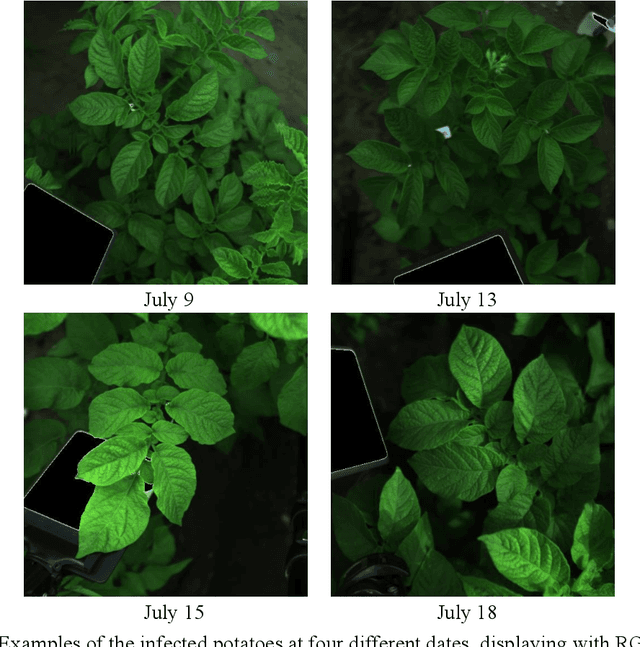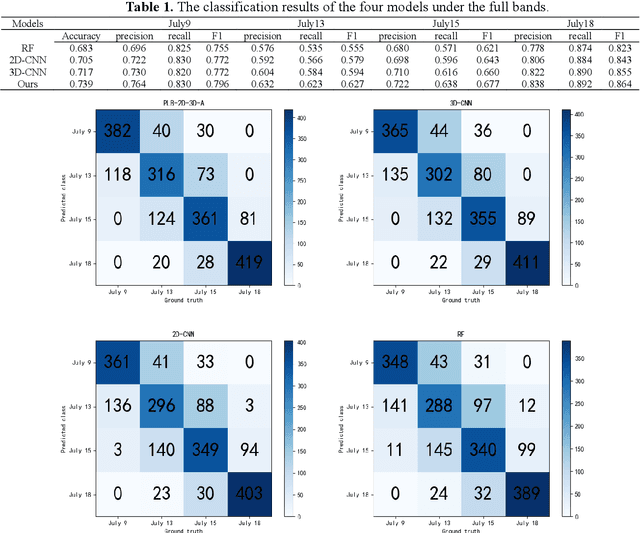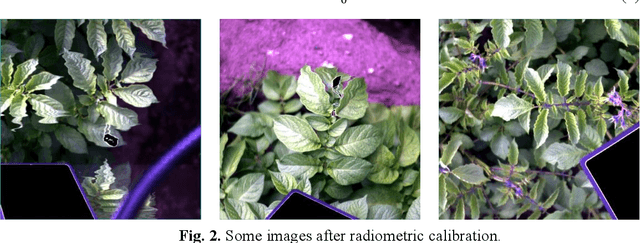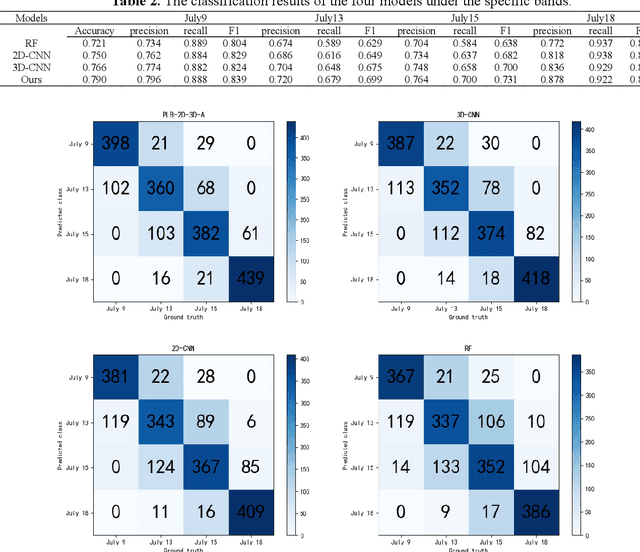Jesper Cairo Westergaard
Department of Plant and Environmental Sciences, University of Copenhagen, Taastrup, Denmark
A General Purpose Spectral Foundational Model for Both Proximal and Remote Sensing Spectral Imaging
Mar 03, 2025Abstract:Spectral imaging data acquired via multispectral and hyperspectral cameras can have hundreds of channels, where each channel records the reflectance at a specific wavelength and bandwidth. Time and resource constraints limit our ability to collect large spectral datasets, making it difficult to build and train predictive models from scratch. In the RGB domain, we can often alleviate some of the limitations of smaller datasets by using pretrained foundational models as a starting point. However, most existing foundation models are pretrained on large datasets of 3-channel RGB images, severely limiting their effectiveness when used with spectral imaging data. The few spectral foundation models that do exist usually have one of two limitations: (1) they are built and trained only on remote sensing data limiting their application in proximal spectral imaging, (2) they utilize the more widely available multispectral imaging datasets with less than 15 channels restricting their use with hundred-channel hyperspectral images. To alleviate these issues, we propose a large-scale foundational model and dataset built upon the masked autoencoder architecture that takes advantage of spectral channel encoding, spatial-spectral masking and ImageNet pretraining for an adaptable and robust model for downstream spectral imaging tasks.
In-field early disease recognition of potato late blight based on deep learning and proximal hyperspectral imaging
Nov 23, 2021



Abstract:Effective early detection of potato late blight (PLB) is an essential aspect of potato cultivation. However, it is a challenge to detect late blight at an early stage in fields with conventional imaging approaches because of the lack of visual cues displayed at the canopy level. Hyperspectral imaging can, capture spectral signals from a wide range of wavelengths also outside the visual wavelengths. In this context, we propose a deep learning classification architecture for hyperspectral images by combining 2D convolutional neural network (2D-CNN) and 3D-CNN with deep cooperative attention networks (PLB-2D-3D-A). First, 2D-CNN and 3D-CNN are used to extract rich spectral space features, and then the attention mechanism AttentionBlock and SE-ResNet are used to emphasize the salient features in the feature maps and increase the generalization ability of the model. The dataset is built with 15,360 images (64x64x204), cropped from 240 raw images captured in an experimental field with over 20 potato genotypes. The accuracy in the test dataset of 2000 images reached 0.739 in the full band and 0.790 in the specific bands (492nm, 519nm, 560nm, 592nm, 717nm and 765nm). This study shows an encouraging result for early detection of PLB with deep learning and proximal hyperspectral imaging.
 Add to Chrome
Add to Chrome Add to Firefox
Add to Firefox Add to Edge
Add to Edge